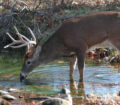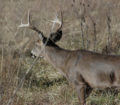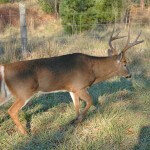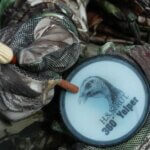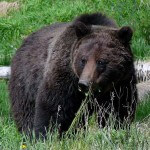Dr. Robert Sheppard, of Tuscaloosa, Alabama, the author of “Whitetails: An Unprecedented Research-Driven Hunting Model” (https://www.amazon.com/Whitetails-Unprecedented-Research-Driven-Hunting-Model/dp/1616633824), who has been an avid deer hunter for more than 40 years and often hunts more than 50 days each season, keeps meticulous records on deer movement, weather conditions and moon phases. He has compiled all his research into a computer program to study and analyze what he has learned in the field. According to Sheppard, “Most hunters overlook at least two factors when trying to determine the effect of the moon on deer movement. Often the moon will be full all day long during daylight hours but rarely seen at night. If the moon is full in the daytime but not at night and doesn’t give off light at night, then do the deer react to the fullness of the moon, or do they react to the darkness of the night? My experience has been when the moon is full during daylight hours and dark at night, the deer tend to not feed as much at night and seem to react as though there is no moon instead of a full moon.
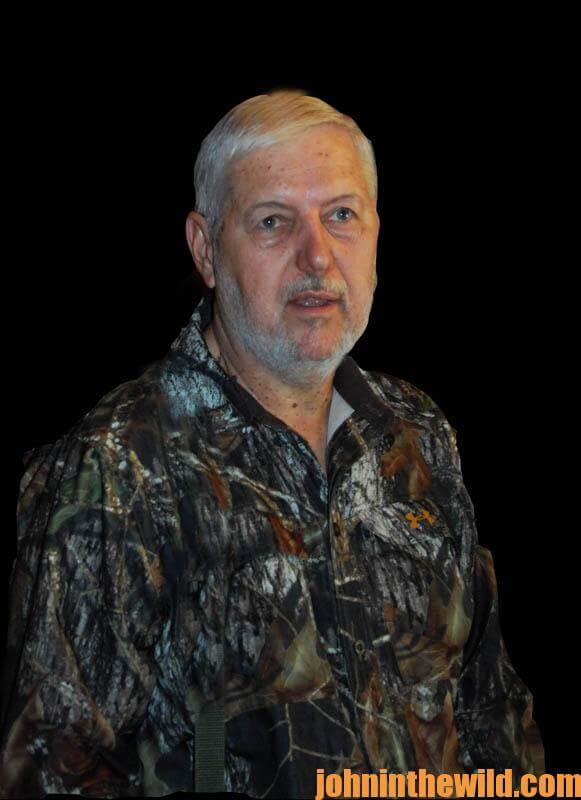 “Another aspect of the moon phase/deer movement question is the amount of cloud cover present on the night the moon is full. I have observed that the day after a full moon when the night has had heavy cloud cover or rain, and the light from the moon does not illuminate the woods that the deer feed and move more actively during daylight hours – just as they will if no moon shines. However, a full moon with little or no cloud cover usually means the deer will be less active during daylight hours, which makes me believe they may have fed primarily at night.
“Another aspect of the moon phase/deer movement question is the amount of cloud cover present on the night the moon is full. I have observed that the day after a full moon when the night has had heavy cloud cover or rain, and the light from the moon does not illuminate the woods that the deer feed and move more actively during daylight hours – just as they will if no moon shines. However, a full moon with little or no cloud cover usually means the deer will be less active during daylight hours, which makes me believe they may have fed primarily at night.
“From my records, I tend to think the more light in the woods at night, the more the deer tend to move and feed at night, and the less active they’ll be in the daytime. When little or no light is in the woods at night, the deer seem to be far-more active in the daytime, which makes me assume they may not have fed the night before. I believe the amount of light that occurs at night, not the moon phase, determines whether or not deer feed and move at night. I’m strongly convinced of the effects of light at night on deer. A full moon and a clear sky has the effect of turning a flashlight back on the earth, while the sun is on the other side of the planet. I believe the light given off by the moon is what affects animal movement, not the geological relationship of the heavenly bodies, their gravitational pull or any of the other features thought to have an effect. I generally won’t hunt the day after a bright night, particularly if the weather is warm, because I believe the deer are less likely to be active during daylight hours.
“However, hunters must remember no one condition determines whether deer will move or feed more actively at night or during the daytime. Weather conditions, air temperature and hunting pressure are all critical factors that also must be considered along with the amount of light in the woods at night in determining deer movement by day or by night.”
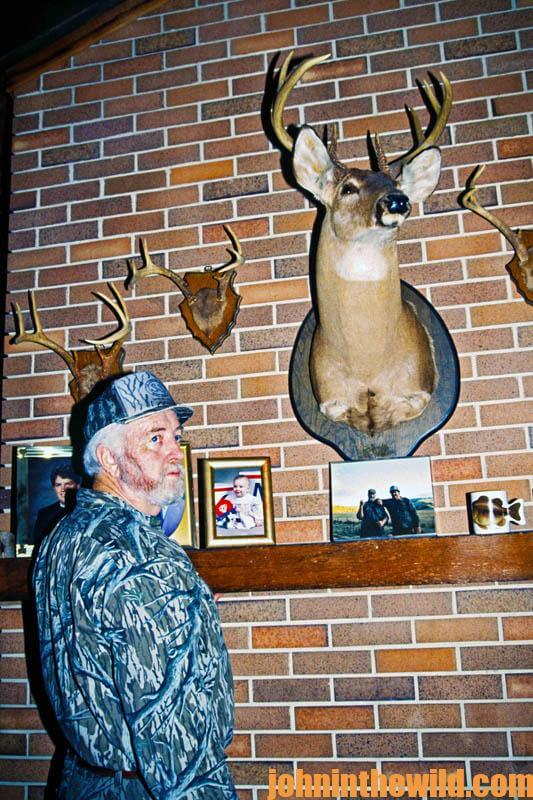 The late Jerry Simmons of Jasper, Ala., who took hundreds of deer with his bow and created the LandShark for bowhunting, spent thousands of hours each season studying deer and deer movement and made some observations about hunting according to moon phase. Simmons once told me, “If you want to take a deer in the morning, generally the bucks will be the most active when little or no moon has been present at night. If you’re planning a morning hunt and want the best odds for success, be sure that no moon or little moon has appeared the previous night. If a full moon has shone the night before you plan to hunt, sleep late, and don’t go to your tree stand until around 10:00 a.m. I believe that usually when there is a full moon at night, bucks, most especially the mature, smarter bucks, tend to feed during the middle of the day. Perhaps these older bucks have learned that by feeding heavily on a full moon they can bed down before daylight and not be hungry until mid-morning or noon when most hunters are not in the woods. Although I think midday hunting is often the best time of the day to hunt, no matter what the moon condition, I have found I see more bucks in the middle of the day when there’s been a full moon the night before I hunt.
The late Jerry Simmons of Jasper, Ala., who took hundreds of deer with his bow and created the LandShark for bowhunting, spent thousands of hours each season studying deer and deer movement and made some observations about hunting according to moon phase. Simmons once told me, “If you want to take a deer in the morning, generally the bucks will be the most active when little or no moon has been present at night. If you’re planning a morning hunt and want the best odds for success, be sure that no moon or little moon has appeared the previous night. If a full moon has shone the night before you plan to hunt, sleep late, and don’t go to your tree stand until around 10:00 a.m. I believe that usually when there is a full moon at night, bucks, most especially the mature, smarter bucks, tend to feed during the middle of the day. Perhaps these older bucks have learned that by feeding heavily on a full moon they can bed down before daylight and not be hungry until mid-morning or noon when most hunters are not in the woods. Although I think midday hunting is often the best time of the day to hunt, no matter what the moon condition, I have found I see more bucks in the middle of the day when there’s been a full moon the night before I hunt.
“If you’re planning to hunt in the afternoon, the worst condition you can have is a full moon, especially a full moon that comes up before the sun goes down. I’ve learned bucks generally feed most actively during the period of the day just before a drastic change occurs from dark to light in the morning and from light to dark in the evening. However, when the moon is full in the afternoon and remains full at night without a dramatic change between daylight and dark, deer will wait until the sun has gone down and feed totally by moonlight. Maybe deer don’t receive the light signal meaning the movement is safe. Then they may not move until later in the night. A deer usually will move just before dark in the dark of the moon but not move at that time if the moon is full and bright.”
Horace Gore, both a scientist and a dedicated deer hunter, seems to agree with Simmons’ generalizations about the best times to hunt according to moon phase. “For my hunting, I’ve determined I generally see more deer early in the morning and late in the evening when the moon has been dark the night before. I’ve also learned that when the moon has been full most of the night, I tend to spot more deer from 9:30 a.m. until 4:30 pm in the mid-part of the day with the most light.”
Another factor you often may overlook in trying to determine deer-movement patterns according to moon phase is the amount of available food and the distance a deer has to travel from his bedding site to that food. As Gore mentioned, “A hungry deer won’t pay nearly as much attention to the moon as a fat deer will. If a buck must travel great distances to find food, you may see him during the early morning hours traveling back to his bedding site, even though there has been a full moon all night.”
To get John E. Phillips’ eBooks and print books on hunting deer, including his newest deer-hunting book, “Whitetail Deer and the Hunters Who Take Big Bucks,” available at http://amzn.to/2bYwYOK/, click on these books to learn more, “How to Hunt and Take Big Buck Deer on Small Properties,” “How to Hunt Deer Up Close: With Bows, Rifles, Muzzleloaders and Crossbows,” “PhD Whitetails: How to Hunt and Take the Smartest Deer on Any Property,” “How to Take Monster Bucks,” “How to Hunt Deer Like a Pro,” and “Bowhunting Deer: Mossy Oak Pros Know Bucks and Bows,” or to prepare venison, “Deer & Fixings.” Or, go to www.amazon.com/kindle-ebooks, type in the name of the book, and download it to your Kindle, and/or download a Kindle app for your iPad, SmartPhone or computer. You also can find John’s books on Nook at www.barnesandnoble.com.
For free information on making jerky from your deer to provide a protein-rich snack, you can download a free book from https://johninthewild.com/free-books.

